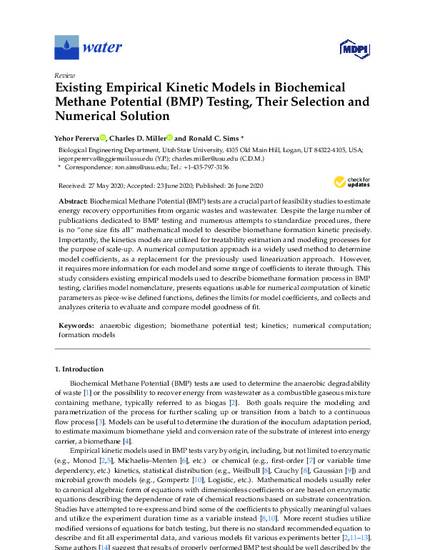
Biochemical Methane Potential (BMP) tests are a crucial part of feasibility studies to estimate energy recovery opportunities from organic wastes and wastewater. Despite the large number of publications dedicated to BMP testing and numerous attempts to standardize procedures, there is no “one size fits all” mathematical model to describe biomethane formation kinetic precisely. Importantly, the kinetics models are utilized for treatability estimation and modeling processes for the purpose of scale-up. A numerical computation approach is a widely used method to determine model coefficients, as a replacement for the previously used linearization approach. However, it requires more information for each model and some range of coefficients to iterate through. This study considers existing empirical models used to describe biomethane formation process in BMP testing, clarifies model nomenclature, presents equations usable for numerical computation of kinetic parameters as piece-wise defined functions, defines the limits for model coefficients, and collects and analyzes criteria to evaluate and compare model goodness of fit.
